Examining website popup examples that generate clicks reveals common strategies such as clear and enticing CTAs, value-driven incentives, and visually appealing designs. These examples showcase effective use of timing, relevance, and user-centric approaches, providing valuable insights for creating engaging popups that encourage user interaction.
Popups have emerged as indispensable tools for web developers and marketers alike. Far from being mere interruptions, these dynamic graphical overlays play a pivotal role in shaping the success of digital marketing strategies and elevating the overall online experience for users. In this comprehensive exploration, we'll delve into the versatility of popups by expanding on the original content and providing practical examples that showcase their dynamic and impactful nature.
What is a Website Popup?
Pop-ups are graphical user interface elements that appear on top of a web page, usually in a separate window or as a layer within the existing page.
These elements can display various forms of content, such as promotional messages, subscription forms, or special offers.
While historically associated with disruptive advertising, modern pop-ups have evolved to become more targeted, personalized, and strategic in enhancing user experience.
How Do Pop-Ups Work?
Website pop-ups are dynamic elements designed to appear on top of a web page, either as a separate window or a layer within the existing content.
They are triggered by specific events or user actions and are commonly employed to convey important messages, capture leads, or guide users towards specific actions.
Understanding how pop-ups work involves exploring their triggers, functionalities, and the diverse types of pop-ups that exist in the online landscape.
Importance of Website Pop-Ups
Website pop-ups play a pivotal role in capturing and directing user attention. Beyond being mere interruptions, well-designed pop-ups serve as versatile tools for engagement and conversion optimization.
Pop-ups serve as effective communicators, delivering key messages, promotions, and calls to action precisely when users are most likely to be receptive.
Their strategic placement and timed appearance enable businesses to provide relevant information, guide users through the website journey, and ultimately drive desired actions.
How Effective Pop-Ups Can Drive User Engagement and Conversions
Effective pop-ups contribute significantly to user engagement by creating interactive and visually compelling experiences.
Whether through exit-intent pop-ups, timed delays, or other innovative formats, these elements captivate attention, keeping users invested in the website's offerings.
Moreover, the impact of well-designed pop-ups extends to the conversion funnel.
By presenting users with targeted content, promotions, or exclusive deals, businesses can nudge visitors towards desired actions, such as making a purchase, signing up for newsletters, or participating in interactive experiences.
The ability to capture leads and convert visitors into customers makes pop-ups a valuable asset in any online marketing strategy.
10 Website Pop-up Examples That Get Clicks
Membership Sign-in Offer:
We move on to the realm of personalized experiences by exploring how popups can enhance user interaction and satisfaction through membership sign-in offers. Booking.com stands out as a prime example, utilizing popups to prompt users to sign in. This not only builds a user database for tailored content but also fosters loyalty and satisfaction through personalized promotions and services.
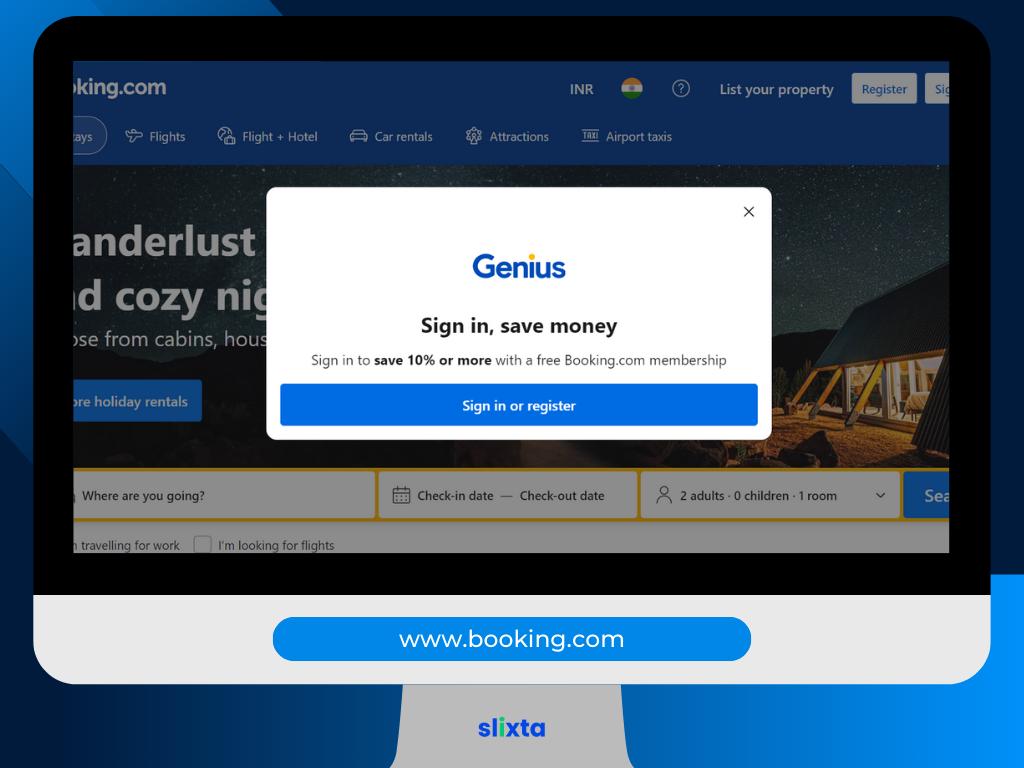
Time-Bounded Discount Coupon:
Creating a sense of urgency is a powerful marketing tactic, and popups are perfect for implementing time-bounded discount coupons. Agoda employs this strategy to boost sales by encouraging visitors to act swiftly, capitalizing on the fear of missing out. This not only increases the likelihood of conversions but also aids in customer acquisition.
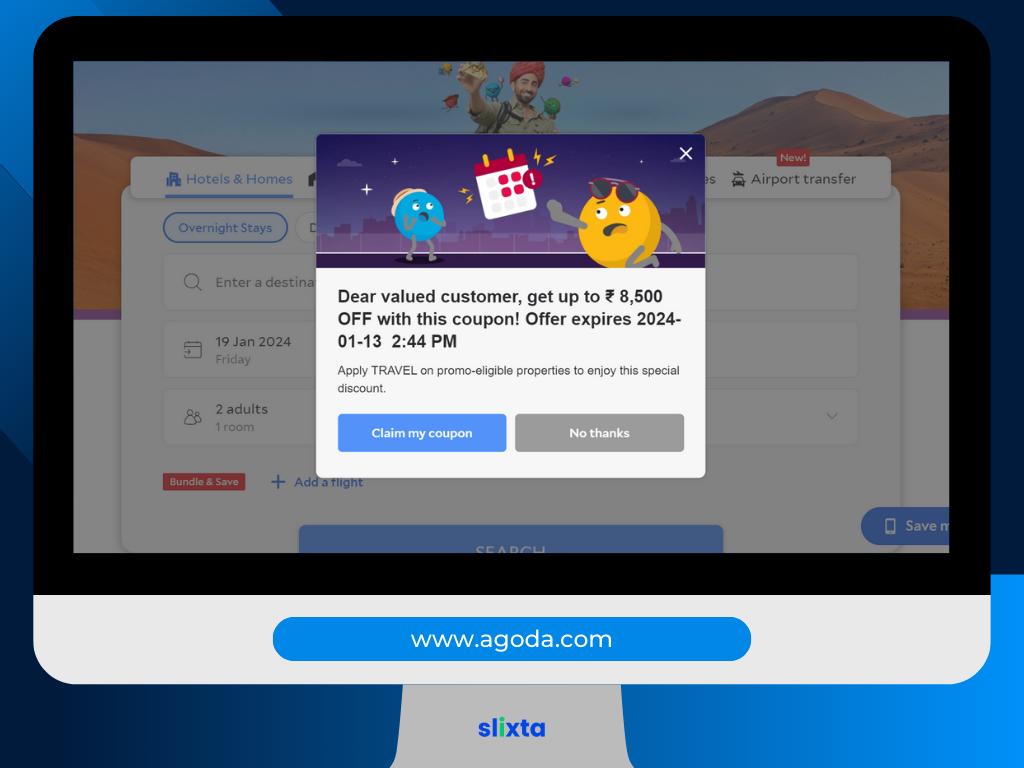
Introduction of New Feature:
Airbnb.co.in leverages popups to inform users about recent updates or new features, sparking interest and encouraging exploration. This strategic use of popups enhances user engagement and satisfaction while keeping the audience informed about the platform's advancements.
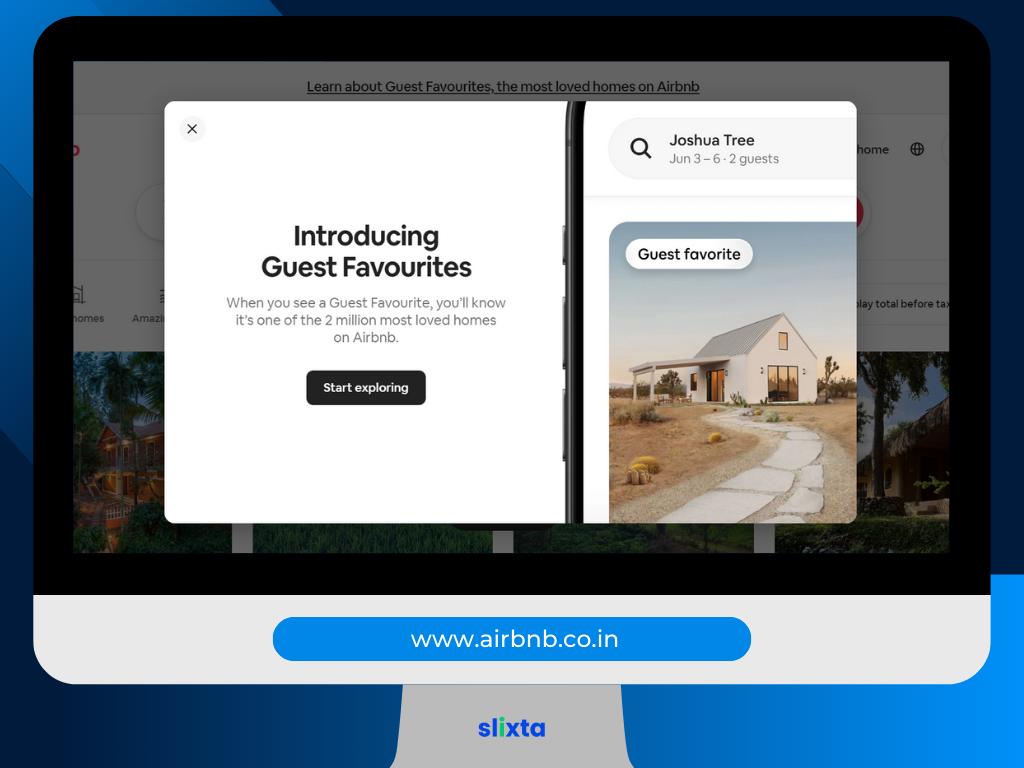
Whitepaper/Ebook Popup:
One of the most effective uses of popups is in driving lead generation and establishing authority. Encouraging visitors to exchange their information for valuable content, such as whitepapers or ebooks, proves instrumental in building a targeted audience for future engagement and marketing efforts. Platforms like ConvertFlow have mastered this approach, showcasing the potential of popups as tools for content-driven lead acquisition.

Membership Signup Popup:
Goibibo.com demonstrates the effectiveness of popups in cultivating a loyal customer base. By prompting visitors to register for memberships or subscriptions, businesses not only facilitate personalized experiences but also build long-term relationships. This, in turn, fosters brand advocacy and repeat business, showcasing the enduring impact of well-executed popups on customer loyalty.

Discount Popup:
Reducing cart abandonment and improving conversion rates are constant challenges for online businesses. Pepperfry.com addresses this issue head-on by presenting visitors with real-time discounts or special deals through popups. This immediate incentive motivates potential customers to complete transactions, positively impacting sales and revenue.

Checking Deliverability of Goods:
Ensuring customer satisfaction is paramount in the online retail space. Shopkohler.in utilizes popups to confirm successful delivery or inquire about the quality of goods received. This engagement not only reinforces trust but also provides a platform for gathering valuable feedback, aiding in the prompt resolution of any potential issues.
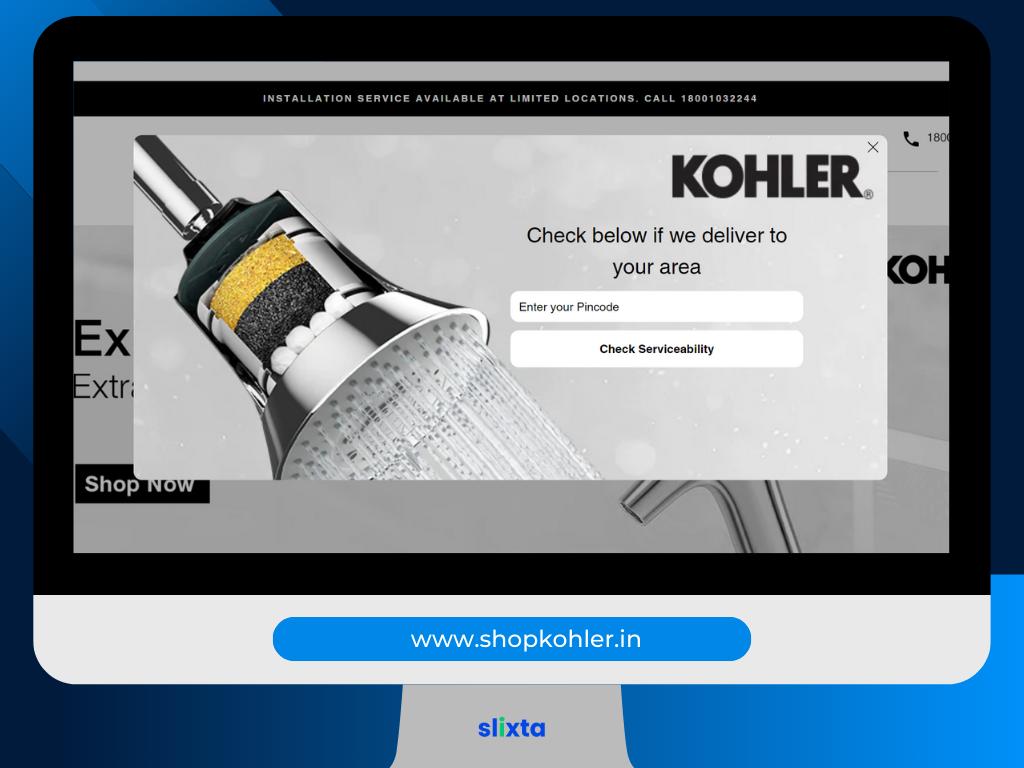
New Deal Popup:
Prose.com demonstrates the power of popups in driving sales and customer interest by showcasing enticing new deals or promotions. This strategy effectively promotes specific products or services, capitalizing on the visitor's interest and encouraging immediate purchasing decisions.
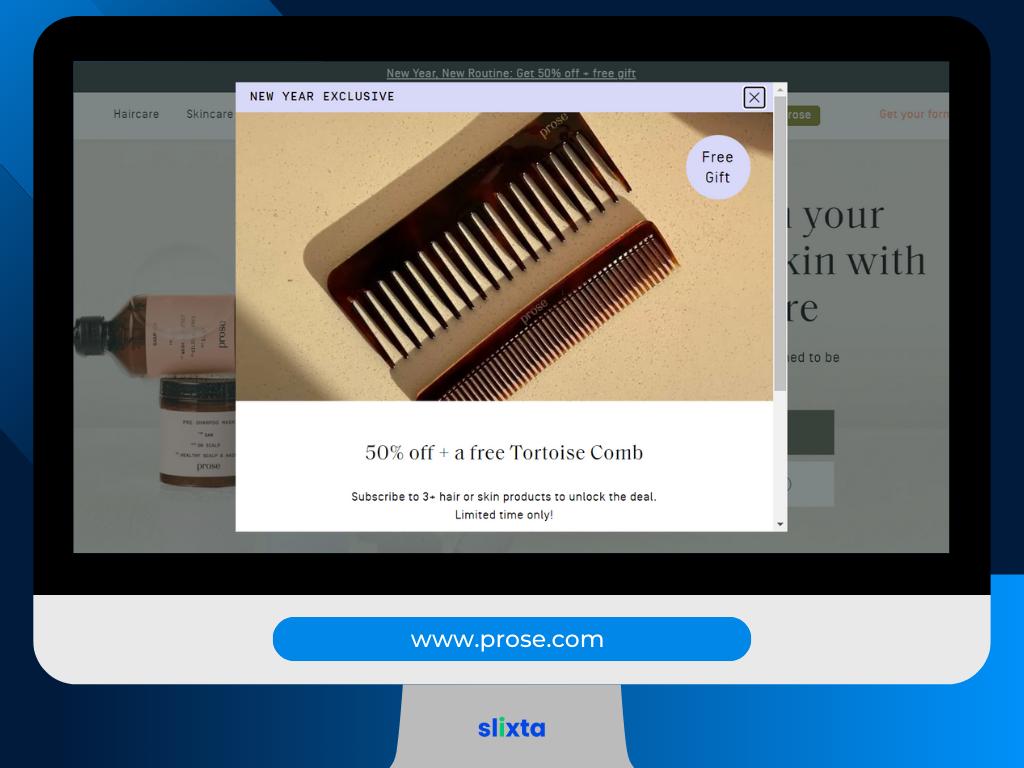
Email List Growth Popup:
Expanding marketing reach is a constant goal, and popups prove to be valuable tools for achieving this. Platforms like int.buypeel.com strategically encourage visitors to subscribe through timely popups, expanding the email subscriber list. This provides a direct communication channel, allowing businesses to nurture leads, deliver targeted content, and foster long-term engagement.

Warning/Info Popup:
Colorescience.com highlights the informative aspect of popups by utilizing them as a communication tool for important announcements, policy updates, or critical information. These popups ensure that users are well-informed and aware of any crucial details relevant to their interaction with the website or platform.
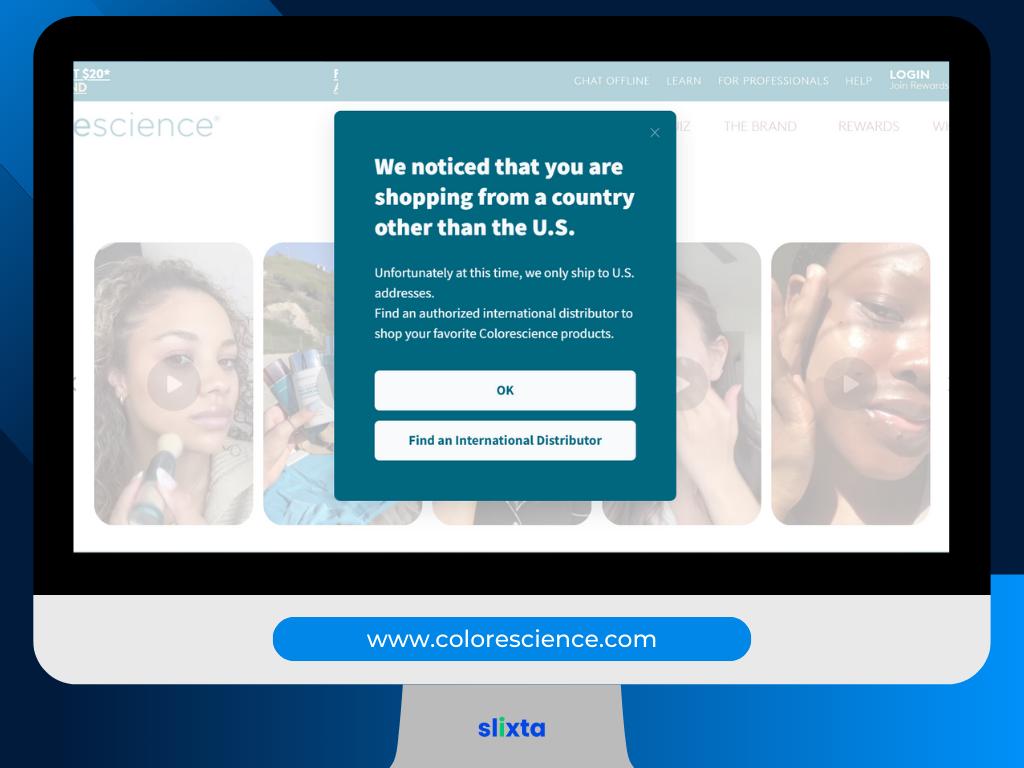
Final Thoughts
Popups serve as versatile tools across various online strategies, each designed with a distinct purpose. From lead generation and building customer loyalty to driving sales and keeping users informed, well-executed popups can significantly enhance user engagement and contribute to the overall success of an online platform. The key lies in understanding the specific goals and tailoring popup content to provide value, create urgency, or foster relationships. Balancing user experience with strategic marketing objectives ensures that popups effectively capture attention, drive actions, and contribute positively to the growth and sustainability of online businesses.
For more valuable insights and information, check out these recommended blogs:

